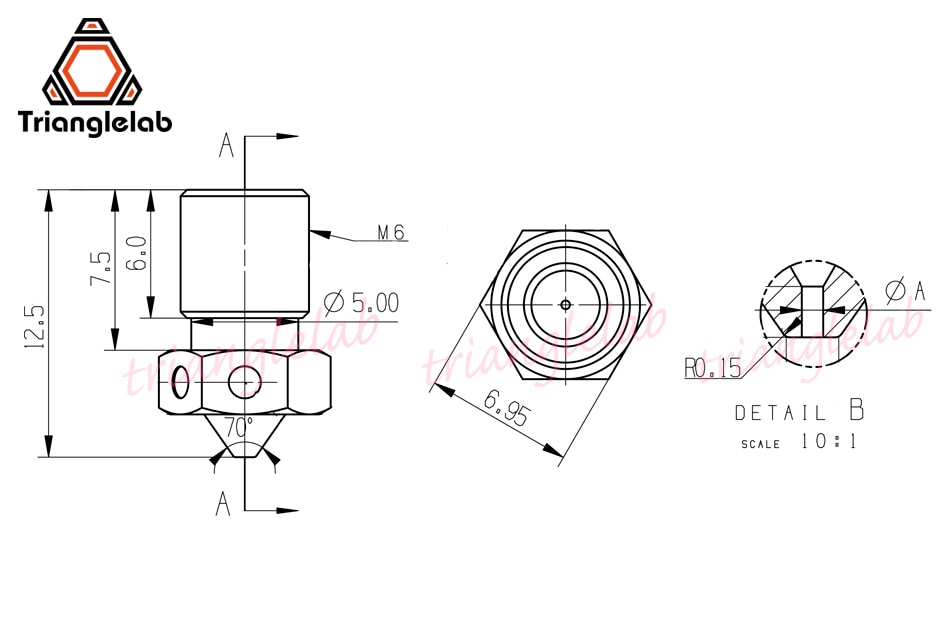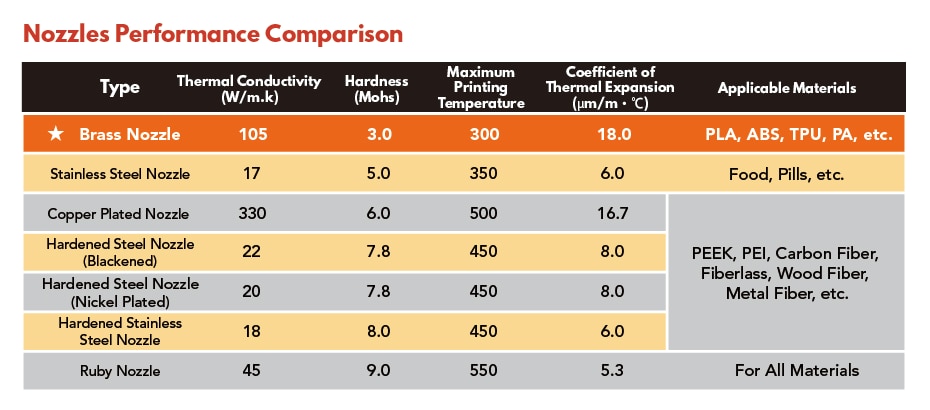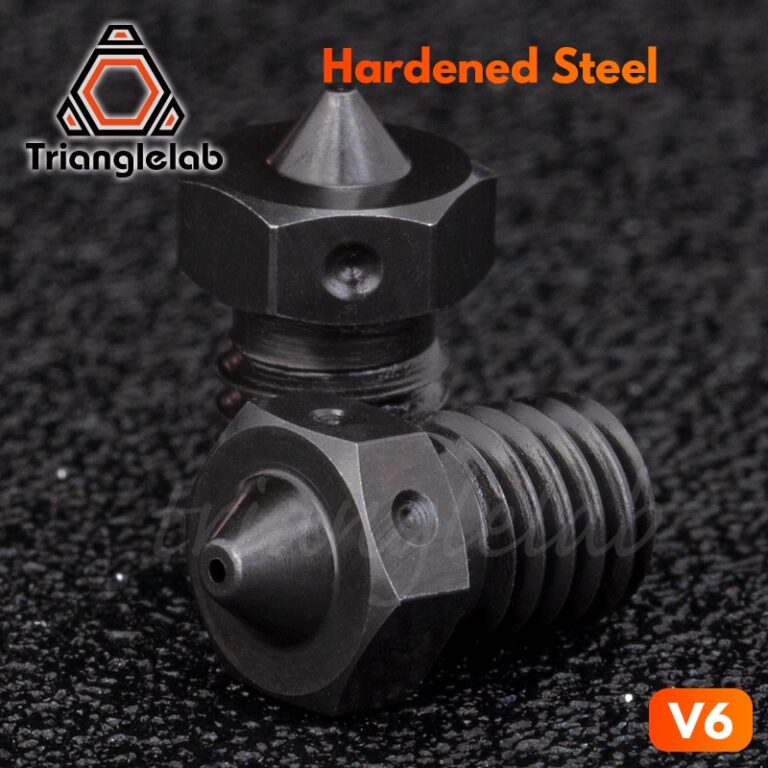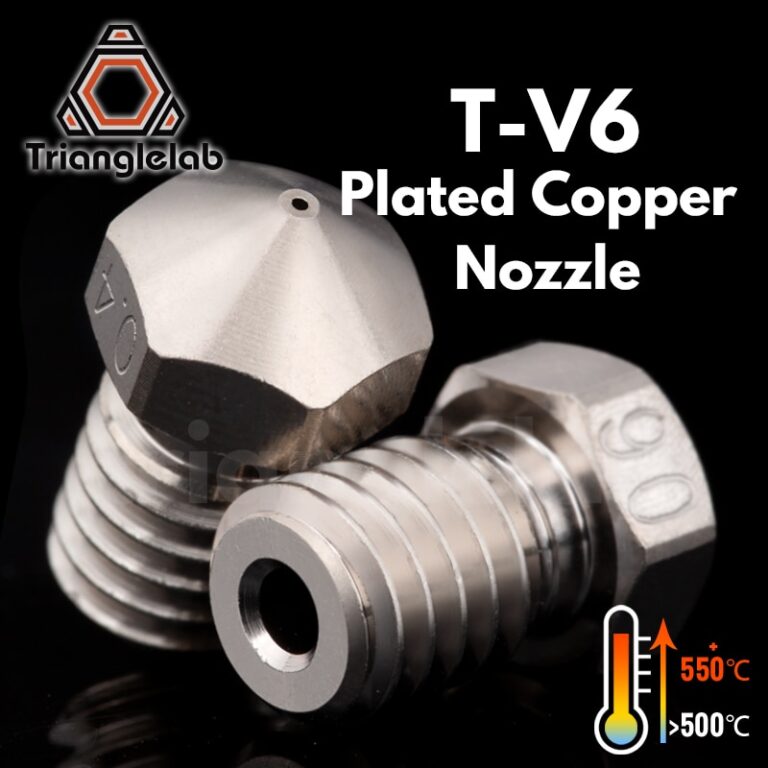V6/V5 Brass Nozzles
What nozzle does my printer use?
This is a very common question.
80% of hobby 3D printers use a V6 nozzle.
If you can see your hot end setup in the pictures below, this is the right article for you.
Where can I get a new one?
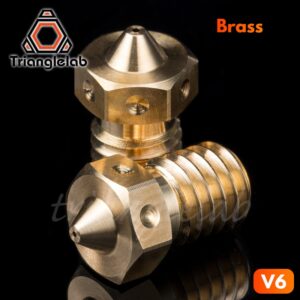
High quality brass nozzles
I have been using these nozzles for years as thousands of another users. It is also recommended for DIY printers such as Voron, BLV MGN Cube and so on. It has been well tested and it is definitelly the best choice in this price range.
Difference between cheap and good quality nozzles
This is the difference between very cheap and good quality nozzles.
This happend to me when I bought a set of nozzles for a few bucks.
A lot of clogging, the layers did not looks well….
The price difference between a cheap and a good quality nozzle is not so huge to deal with problems such as these.
Every nozzle change in standard hot ends usually requires at least 30 minutes of your time, usually an hour, because you should recalibrate your bed – bed leveling.
Suitable filaments
Standard brass nozzles are very good for printing on abrasive filaments such as PLA, PETG, ABS, TPU and they are also cheap when compared to another types.
Absasive filaments such as marble PLA, wood, carbon fibre PETG are not recommended. The nozzle will wear out just after a few dozen hours.
Dimensions and nozzle types
This is a standard nozzle for V5, V6, Mosquito, NF-Crazy hot ends.
It is suitable for almost every 3D printer, such as i3 Mega, Kossel, Prusa and so on…
These nozzles are usually made with these inner diameteres:
0.15, 0.20, 0.30, 0.40, 0.50, 0.60, 0.80, 1.00, 1.20 mm
Standard nozzle diameter is 0.4 mm.
The smallest usable nozzle diameter is a 0.20 mm type. You can print smaller details with a better quality.
When choosing the nozzle, please do not forget that the filament flow grows exponentially with the nozzle diameter – S = pi * (d*d)/4.
This means that your printing time will increase or decrease exponentially if you change the nozzle to another diameter from the standard 0.4 mm type.
Technical specifications
You can compare technical specifications of different nozzle types in the table below.
It is quite easy to observe that the brass nozzle has the lowest hardness which means that it is not suitable for abrasive filaments.
However, brass nozzles offer very high thermal conductivity – this means how well the material can transfer heat.
Thermistors measure temperature inside the hot end, not in the nozzle.
The nozzle is pernamently being cooled down with a flowing filament and the inner surface of the nozzle will always be smaller than the temperature of the hot end.
The best example is a comparison between brass and stainless stell nozzles:
You usually need to set the printing temperature about 10-15°C higher with a stainless steel nozzle in comparison with the brass nozzle.
This is caused by very low thermal conductivity and can be solved only with a higher printing temperature or different nozzle material.
If you have ever wondered what a hot end “hot tightening” means, have a look at a thermal expansion coefficient in the table above.
Most of the known materials are known to expand their dimensions while heating up.
In our case V6 nozzle should theoretically expend (get longer in Y dimension) after heating up from a room temperature of 20°C to 240°C (PETG for example) to:
12.5 * (240-20)*18*0.000001 = 0.0495 mm.
Heat break expands too, but not so much due to the lower temperature and lower thermal expansion coefficient.
It is always better to re-tighten the nozzle after heating up to the printing temperature, but usually thermal expansion takes care of that.
